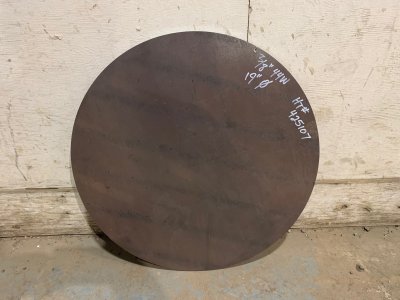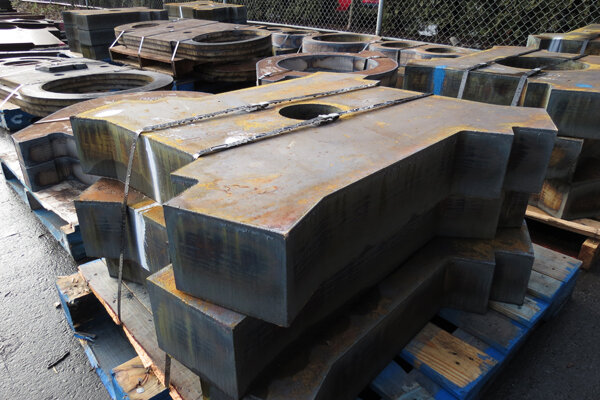JimGnitecki
Active Member
Below is a photo of the leftover 3/8" thick 19" diameter steel plate that my local steel supplier sold me to use as a welding table top for small projects.

What do the "44W" and "HT #425107 tell me about the properties of this piece of steel?
And, is the surface just a rust layer or something different?
I assume I need to belt sand the surface to get a good clean steel surface ?
Jim G

What do the "44W" and "HT #425107 tell me about the properties of this piece of steel?
And, is the surface just a rust layer or something different?
I assume I need to belt sand the surface to get a good clean steel surface ?
Jim G

